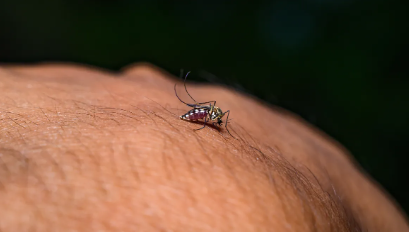Dengue fever has had a particularly terrible year; until October, there had been about 12 million cases reported in the Americas, nearly double the 4.6 million cases from the previous year.
According to research presented at the American Society of Tropical Medicine and Hygiene’s annual meeting on Saturday, rising temperatures are responsible for almost a fifth of the current dengue burden, quantifying the impact of climate change on the trend.
According to the study, if emissions continue at their current rate, dengue prevalence might rise by 60% by 2050, with surges of up to 200% occurring in select regions, such as sections of Brazil, Mexico, Bolivia, and Peru.
Public health professionals have long cautioned that because global warming broadens the geographic area where mosquito-borne illnesses may survive and flourish, it makes it possible for these diseases to move to new locations.
According to Mallory Harris, a postdoctoral associate in the biology department at the University of Maryland and a co-author of the current study, her team’s results provide more proof that dengue’s expansion has been significantly influenced by climate change. In a broader sense, the study emphasizes the link between greenhouse gas emissions and certain health outcomes, she added.

Dengue is an increasingly serious health risk that can have grave repercussions. We should be getting ready for it,” Harris stated. “These kinds of widespread epidemics should be anticipated in the future, and strategies for responding to them should be considered.”
More than 7,200 dengue cases have been reported in the US and its territories so far this year, which is more than twice as many as last year and the most since 2013.
A health recommendation alerting people to a higher risk of dengue infections was released by the Centers for Disease Control and Prevention in June. The following month, the Monroe County Department of Health issued its own advisory following the detection of two locally acquired cases in the Florida Keys. According to the CDC, there have been 53 locally acquired cases in Florida so far, which means they were not linked to travel to a nation where dengue is common. There have been 15 similar incidents in California.
However, Puerto Rico, which in March declared a public health emergency due to a startling increase in dengue illnesses, has seen the great majority of U.S. cases this year. In Puerto Rico, there have been over 4,500 cases of locally acquired dengue, up from less than 1,300 instances the previous year and even fewer the year before.
The new study, which has not yet been published or subjected to peer review, examined dengue incidence and temperature records for an average of 11 years in 21 Asian and American nations. A simulation of what would have occurred during that time frame in the absence of human-caused climate change was utilized by the researchers to compare the results.
A news release regarding the findings said that because to a lack of dengue data from certain regions, such as South Asia and sub-Saharan Africa, the final estimates are probably at the low end of the range. Furthermore, since the virus has just lately become a local danger, forecasts for the southern United States are challenging.
The researchers discovered that between 68 and 82 degrees Fahrenheit is when the dengue-carrying mosquito, Aedes aegypti, spreads the virus the most effectively. They came to the conclusion that dengue would continue to rise in most of the nations they examined due to climate change, even in the event that global greenhouse gas emissions were drastically cut.
Harris suggested concentrating on vaccinations and measures to reduce mosquito populations, saying, “We need to be thinking about mitigation because the risks of this are going to increase regardless.”
Earlier this year, the CDC said, the manufacturer of the only dengue vaccine licensed by the Food and Drug Administration stopped producing it.
Dengue is a viral infection that causes more than half of its victims to have no symptoms. The majority of the others suffer from minor instances, which might include joint discomfort, fever, headache, nausea, and vomiting. According to the CDC, severe infections accounted for almost 2% of cases in U.S. territories between 2010 and 2020. They can result in bleeding beneath the skin, in the nose, or in urine or stool. They can also cause a sharp decrease in blood pressure or even death.
In Latin America, the illness is most prevalent in regions with humid, tropical temperatures.
It takes “something that we all knew — that the temperature is important — but quantifies how much and how important it is to the changes we’re seeing,” according to Derek Cummings, an epidemiology professor at the Johns Hopkins Bloomberg School of Public Health who was not involved in the current study.
According to Cummings, who has published his own studies on the disease, vaccinations should be prioritized globally, mosquito populations should be better controlled, and hospitals and healthcare professionals should be ready for an increase in dengue cases.
Harris underlined that the new study demonstrates how the effects of climate change varied in different regions of the world.
Places like Peru, Bolivia, and Mexico—which aren’t necessarily the hottest overall—saw the biggest effects of past climate change on the dengue burden. According to her, they aren’t always the areas seeing the highest rise in heat-related fatalities. “There are effects that you might encounter in slightly cooler locations that should also be considered.”





